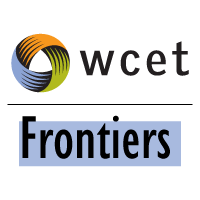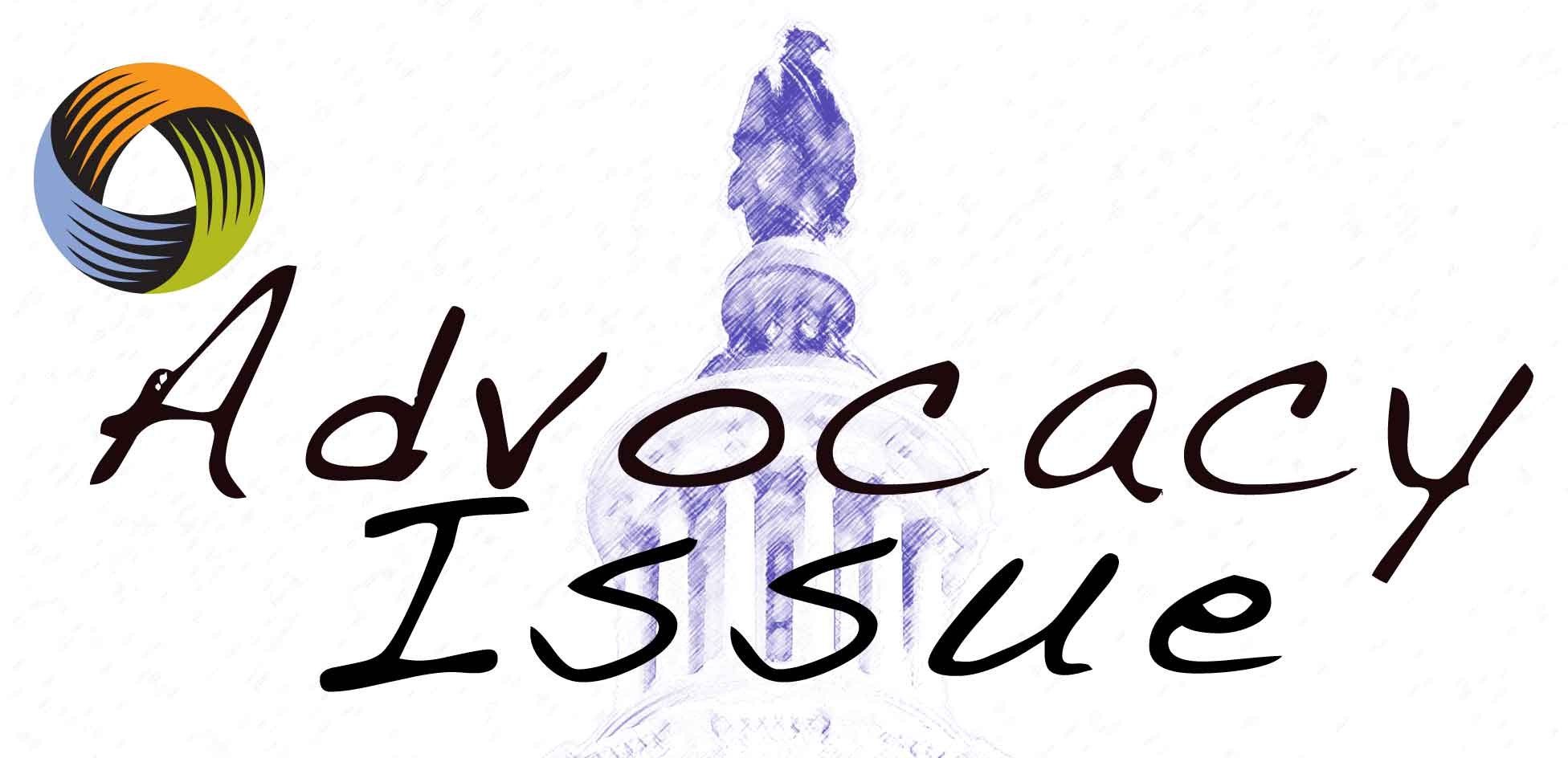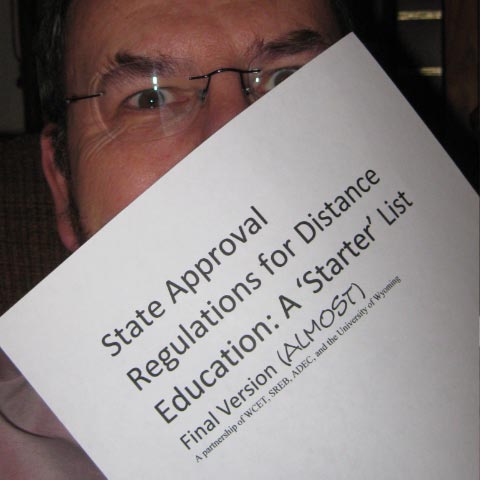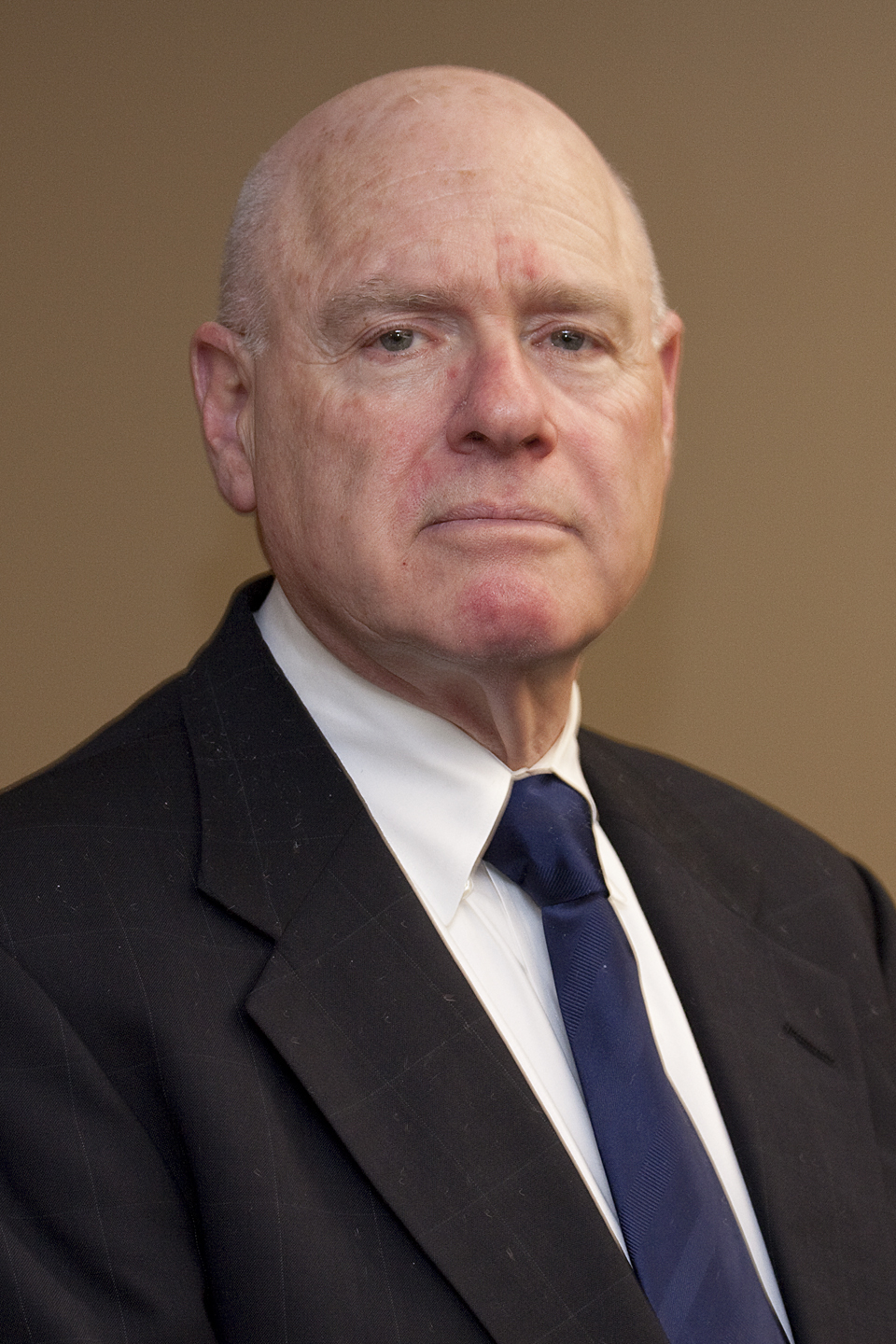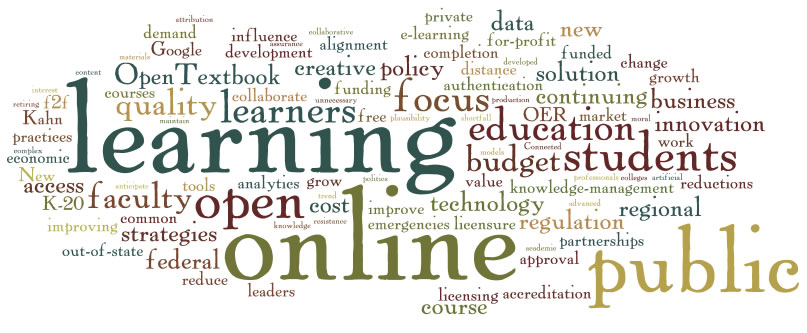The long-awaiting ‘Dear Colleague’ letter is now here. The letter is meant to answer outstanding questions on this regulation. Sometimes it succeeds and sometimes it fails.
Eduardo Ochoa, Assistant Secretary for Postsecondary Education, reminds us that: “this guidance is provided to assist institutions with understanding the changes to the regulations in these areas, and does not make any changes to the regulations. Affected parties are responsible for taking the steps necessary to comply by the effective dates established by the final regulations.”
 I advise that you read the complete language for all ‘state authorization’ responses. In this posting, I briefly describe what is said in each distance education question and response. I will also provide my own analysis and additional context based upon my conversations with others about each issue.
I advise that you read the complete language for all ‘state authorization’ responses. In this posting, I briefly describe what is said in each distance education question and response. I will also provide my own analysis and additional context based upon my conversations with others about each issue.

Question 15: State-by-State List of Regulations
In brief: The Department repeats its previous stance that it will not publish a list of State authorizing methods or agencies for distance education.
Analysis: This is not surprising and might be better handled by an entity that has more flexibility in what it can publish. The State Higher Education Executive Officers has said that they “intend” to work on such a list, but possible funders have wanted to wait until this ‘Dear Colleague’ letter was released before proceeding. WCET staff have meetings with SHEEO and with others who have created lists (Dow Lohnes, Eduventures, Presidents Forum) next week to discuss next steps. Somebody has got to do this. Meanwhile, WCET released an addendum with new information from Arkansas, Mississippi, Oklahoma, and significant updates from Oregon.
Q 16: Definition of a ‘Good-Faith’ Effort to Comply by July 1, 2011
In brief: The response expands upon the wording about ‘good –faith effort’ that was released in this blog in January. For the 2011-2012 award year alone, if it does not already have approval, the institution must apply for approval in each state it is required to do so. It must also have documentation of the submitted application
Analysis: The expansion upon the earlier wording released in my blog is more procedural than substantive. Even so, it is welcomed. It still appears that to me that all institutions are required to either have or to have applied for approval (where required) by July 1. While, I’m glad to see this, read my worry near the bottom of this post.
Q 17: Military Personnel
In brief: On whether an institution needs approval from states in which military personnel are stationed, “this question is a matter of state law…” Institutions will need to find out what each state requires regarding approval in serving military personnel
Analysis: The question about how do military personnel count was asked at our December 7 webcast with Fred Sellers from the Department. Since then I’ve told people that my expectation (and fear) was that they had no choice but to rely on the laws of each state. That’s what they are doing. I’d hoped for an exception, but wondered how it could be justified. For those institutions serving military personnel, life just became more difficult. Given the transient nature of those in our armed forces, institutions with a military focus will need to apply (if required) in every state with a base, post, or other installation.
Q18: Notifying Students of Complaint Processes
In brief: Yes, institutions must notify their distance students of complaint processes for both: a) the institution’s accrediting agency and b) any state process or processes (yes, there could be more than one) for filing third-party complaints about your institution.
Analysis: I thought that Fred Sellers was very clear about this in our December 7 webcast, so it was not a surprise to me. I know that others chose to belief that it was not a requirement or questioned it. The impact brings us back to the state-by-state list. We tried to find any complaint processes that we could and reported those. It becomes important to have an updated list of complaint processes.
Q 19: The Penalties for Non-compliance
In brief: If an institution is found to be non-compliant in a state, the Department expects that Title IV funds will be returned for students in states where the institution does not have authorization. The Department reserves the right to impose harsher penalties.
Analysis: Again, Fred Sellers was clear about this in our December 7 webcast. The proposed penalties seem to be in line with actions the Department has taken on instances of non-compliance for other Title IV infractions.
Q 20: Institution Be in Compliance When It Enrolls the Student and Re-evaluated if Student Moves
In brief: A student is eligible for Title IV funds only if the any required State approval (pertaining to that student) has already been obtained at enrollment. If a student moves, the student’s aid eligibility must be re-evaluated.
Analysis: This has been an open question since the release of the regulations and it is helpful to finally have the answer. Along with the answer about military personnel, this response leaves the institutions with some very, very tough decisions in the short term:
- In the states where we need to apply, in which states can we afford (both in fees and staff time) to apply?
- For those states where we decide not to apply:
o Will we decline to further enroll students? Is that legal? What happens to students in mid-program?
o Can we enroll students without aid?
o Are we willing to continue to serve students in that state and hope that a court mandate or Congressional pressure saves us?
My suggestion…you better get busy applying in states where you have the most risk. Get busy contacting your Congressional delegation for relief (remember that few in Congress or the Department think this is a big deal). Figure out what you can and will do in those states where you do not apply.
Q 21: No Minimum Number of Students
In brief: The minimum number of students in a state to trigger compliance is left to the laws and regulations of each state.
Analysis: I know others hoped for another answer, but there’s no real surprise here. The federal regulation is all about following and enforcing the approval rules and regulations of each state. In our review of state laws, the number of students served was seldom or never a consideration in whether an institution needed to comply or not.
Just as the Department defined how it would enforce its regulations in the ‘good-faith effort’ definition, there’s hope that we can work with state regulators on this issue. I know it may be a pipe dream, but I can envision a common understanding among state regulators that (under certain conditions to be created later) an institution would not be required to seek approval if it is serving only a small number of students in each state. Unfortunately, it will take more than a year to get such agreements in place.
Q22: No State Documentation is Required from States Where the Institution Need Not Apply
In brief: If a State has no requirements or does not require an institution to apply, the institution does not need a letter from the State detailing that fact. However, the institution must demonstrate that it did not need to seek approval.
Analysis: On the one hand this makes perfect sense. Why are we bothering states with few or no regulations that they are not regulating an institution? I have already heard that states with no regulations are being beset with requests for letters saying there’s no need to apply. Some of those states are now considering regulations or fees to write these letters. We are being our own worst enemies in this case. On the other hand, without a single, trusted list, how will institutions be able to provide the requested proof?
Q23: Aid Eligibility is Not Lost if a State Does Not Act on an Application
In brief: An institution will not lose eligibility if a state has not acted on the institution’s application by July 1, 2011.
Analysis: This response goes hand-in-hand with Question 16 on ‘good-faith efforts.’ While the language in the October 29 release of regulations said that this regulation would put no burden on state regulatory agencies, it is heartening to see that there is recognition that these agencies are being overwhelmed. As I stated earlier this year in my “Eight Things You Can Be Doing Now” blog, you institution should document all correspondence with each state. This could someday be very important in demonstrating your attempts at compliance.
Highlights from Other Questions and Responses
The bulk of the language in the ‘state authorization’ regulations is dedicated to institutions seeking approval in their own state. The distance education regulation is just one paragraph. Questions 1-14 in the ‘state authorization’ section of this ‘Dear Colleague’ letter address the in-state issues, but some of those responses could have a big impact on distance education, as well:
- Question 5 says that institutions must be in compliance with all State laws, including any requisite licenses. For example, a nursing program might need additional licensure by the State’s board of nursing. If this is true in-state, why would this be any different for distance education programs?
- Question 9 seems to indicate that tribal colleges are no longer exempt from regulation once they educate students outside their tribal lands.
- Question 13 adds more detail to the requirement for a third-party (not internal to the institution) complaint process. It also says that it would not be acceptable for a board or central office to handle complaints for other institutions in the State. That might require some changes in processes in some states.
- Question 14 addresses changes in state laws. The Department understands that it will take time to handle changes in state laws and will observe institutional responses to those changes on a case-by-case basis.
Hey, What About?
Some questions that I would have been addressed:
- What about Reciprocal Agreements? On page 66867 of the October 29 regulation is the statement: “We continue to believe that we do not need to regulate or specifically authorize reciprocal agreements. If both States provide authorizations for institutions that comply with § 600.9 and they have an agreement to recognize each other’s authorization, we would consider the institution legally authorized in both States as long as the institution provided appropriate documentation of authorization from the home State and of the reciprocal agreement.” I think I understand, but it leads to all sorts of questions. I know that Bruce Chaloux asked about the Southern Regional Education Board’s Electronic Campus. Does it comply? What about interstate financial aid consortium agreements? Do they now need the state approval agencies to review and approve? A better understanding of reciprocal agreements could have had a big impact on how institutions respond to these regulations. This was a major omission.
- What about Programs that Don’t Offer Federal Aid? Given the wording, I firmly believe that state laws need to be followed for correspondence and other non-credit offerings. But, it would be nice for someone from the Department to say this.
- What about Blended Programs or Programs that Require a Practicum? I have had many people ask me about this. Again, I firmly believe that if you are operating in a state that you are subject to the laws of that state, but it would be nice for the Department to clarify.
My Worry about the Spin around ‘Good-Faith Effort’
Here’s my worry…I have heard some (not all) Department spokespeople refer to this as a ‘delay’ in the regulation. Indeed, it is a delay in the enforcement and lessens the burden on the Department over the coming award year.
For the institutions, IT IS NOT A DELAY.
Institutions are still left with a monumental burden of doing the following by July 1.
- Identifying where their students are located (that should be relatively easy),
- Deciphering the regulations for each state in which they serve students (more difficult than one might think),
- Determining if they need to apply for each state (again not easy),
- Applying in each state in which they are required. John Ebersole, president of Excelsior College testified as to the difficulty of this step to House Education and Workforce Committee last week. He said that it took 400 staff hours to complete the application process for just two programs in one state. That does not sound easy. See our collection of impact statements regarding this regulation. Institutions are struggling.
All of this has to be done by July 1 and at great cost. I know that institutions were “always required to have determined whether State Approval was necessary and to have sought approval.” But, we have had a triumvirate of neglect on this issue for DECADES. For the most part, public institutions have not applied, state regulators have not looked for them, and the federal government has not checked for compliance. Why does this all need to be rectified by July 1?
Bottom Line (Lines?)….
- Yes, institutions should have been applying all along, but they did not and NO ONE CARED. I include the author of this post about “hysteria over state authorization.”
- It is confusing and expensive to apply.
- Students will ultimately pay. Increased costs will be passed along. Institutions will withdraw from some states.
- Since it took DECADES for us to get to this point, it is unrealistic that is will be resolved in eight months.
- Reciprocal agreements could help, but they will take more than a year to develop.
Let’s follow state and federal laws, but give us the time to do it right.
A TRUE delay of two years is needed.
Russ Poulin
Deputy Director, Research & Analysis
WCET – WICHE Cooperative for Educational Technologies
rpoulin@wiche.edu
State Approval page: http://wcet.wiche.edu/advance/state-approval
Twitter: @wcet_info State Approval Hashtag: #stateapp
Join WCET! Support our work on this issue.
Join our State Authorization Network.
